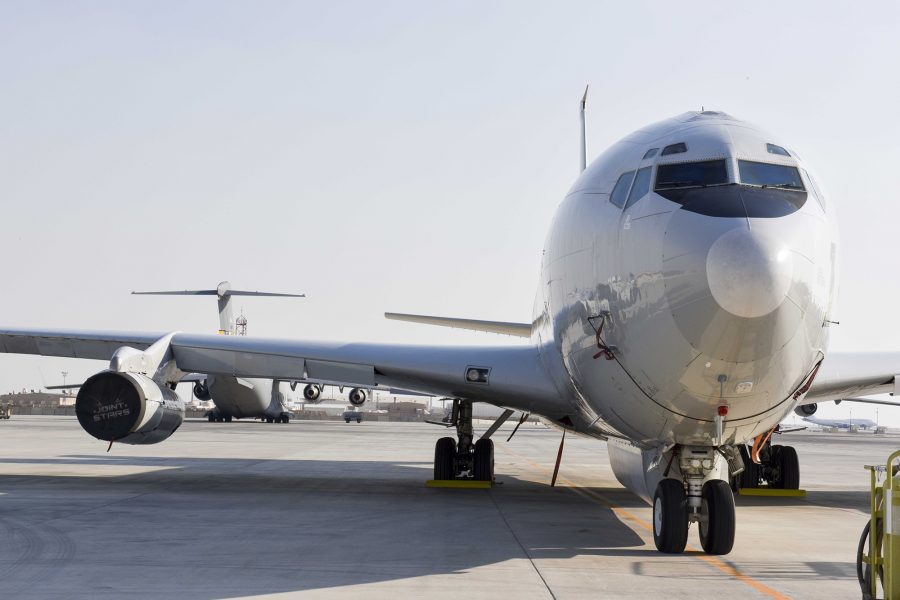The Air Force recently deployed the E-8C Joint Surveillance Target Attack Radar System back to the Middle East, about three months after pulling the aircraft from the theater for the first time in 18 years.
Air Combat Command said at the time there was a “higher demand signal for JSTARS support” to other combatant commands, but photographs released Feb. 1 by Air Forces Central Command show the E-8C returned to al-Udeid Air Base, Qatar, on Jan. 16—just over a week after Iran launched a volley of ballistic missiles at U.S. personnel in Iraq.
The service has 16 of the aircraft, which tracks moving targets on the ground and provides that information to help direct U.S. forces. The aircraft provide commanders with “vital intelligence, surveillance, and reconnaissance capabilities to help maintain security and stability” in the region, AFCENT said.
From their first deployment to the Middle East in November 2001 until they left al-Udeid on Oct. 1, 2019, the aircraft flew 10,938 sorties, including 114,426.6 combat flying hours in support of operations in Iraq and Afghanistan, according to an October release from Robins Air Force Base, Georgia, where the aircraft are based.
During a deployment last year, JSTARS crews flew every other day, totaling more than 100 combat missions over the course of about four months.
The service expects the aircraft to fly into the 2030s after canceling a recapitalization program in favor of the planned Advanced Battle Management System.
